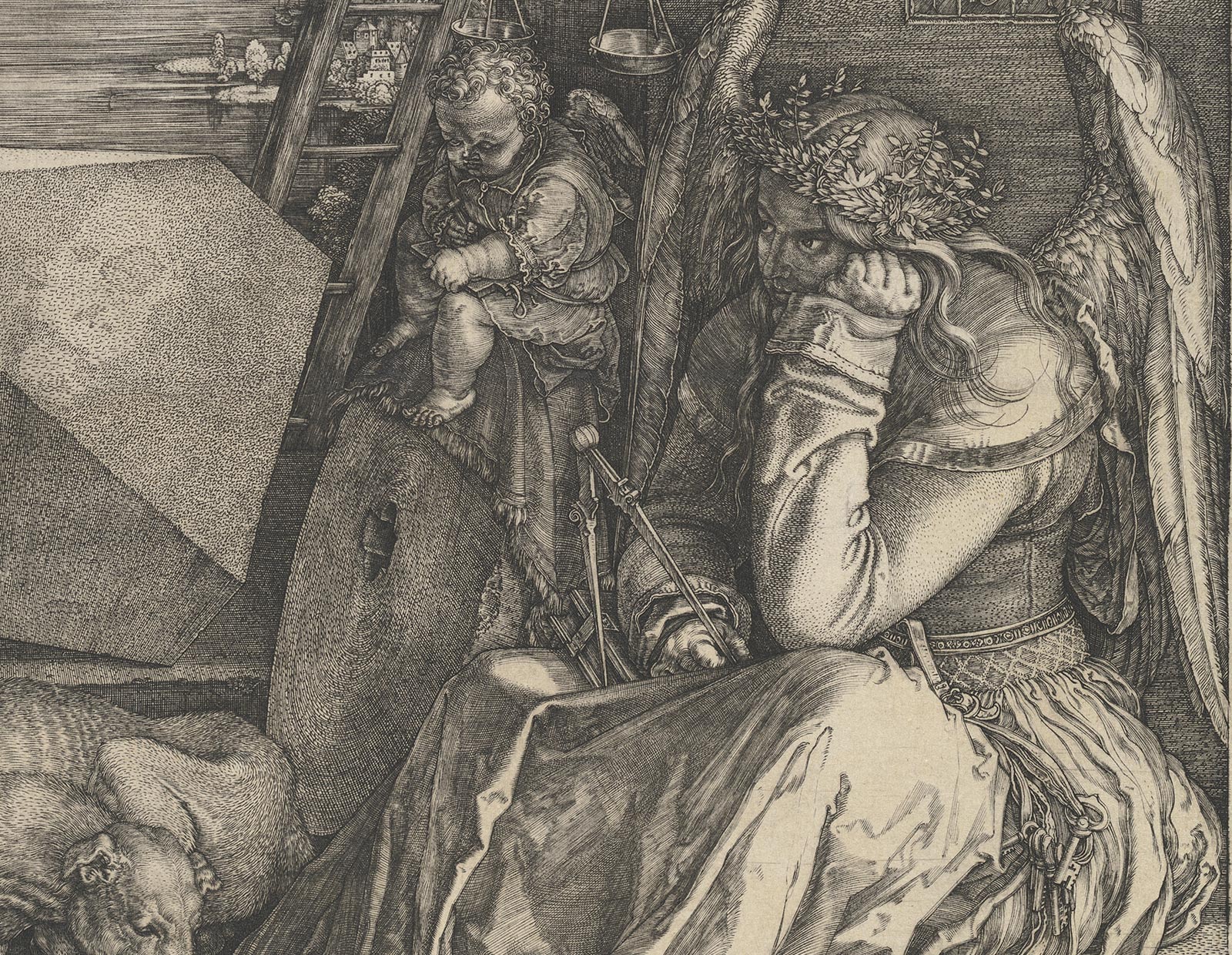Albrecht Dürer’s enigmatic Melencolia I has inspired and provoked viewers for nearly half a millennium. The evident subject of the engraving, as written upon the scroll unfurled by a flying batlike creature, is melencolia—melancholy. But what Dürer intended by the term, and how the print’s mysterious figures and perplexing objects contribute to its meaning, continue to be debated. Simultaneously inviting and resisting interpretation, Melencolia I is a testament to Dürer’s extraordinary intellectual ambition and artistic imagination.
A winged figure sits, brooding, her face in shadow but her eyes alert. She rests her head on her left hand and toys with a caliper (resembling a compass) in her right. A putto seated on a millstone writes on a tablet while below, an emaciated dog sleeps between a sphere and a truncated polyhedron. Carpentry tools are scattered on the ground. A ladder leans against a building that supports a balance, an hour glass, and a bell. A magic square is inscribed on one wall; the digits in each row, column, and diagonal add up to 34. In the background, a blazing star or comet illuminates a seascape surmounted by a rainbow.
One of Dürer’s three “master engravings,” Melencolia I has been linked by scholars to alchemy, astrology, theology, and philosophy, among other themes. Perhaps the most prevalent analysis suggests the engraving represents the melancholy of the creative artist, and that it is a spiritual self-portrait of Dürer himself. From ancient Greek times through the Middle Ages, melancholy was considered the least desirable of the four humors that were believed to govern human temperament. Alleged to suffer from an excess of black bile, melancholics were thought to be especially prone to insanity. Renaissance thought, however, revamped the status of the dreaded humor by connecting it to creative genius as well as madness.
Dürer’s take on artists’ melancholy may have been influenced by Heinrich Cornelius Agrippa’s De Occulta Philosophia, a tract popular in Renaissance humanist circles. Agrippa classified melancholic inspiration into three ascending levels: imagination, reason, and intellect. He linked imagination (the first and lowest level) to artistic genius; this may account for the numeral “1” in the title and provide a key for explaining the frustration of the winged figure-cum-artist.
The objects she has at hand are associated with geometry and measurement, fields of knowledge that were considered the building blocks of artistic creation and that Dürer studied doggedly in his quest to theorize absolute beauty. Yet struggle as she might intellectually, she is powerless to transcend the earthbound realm of imagination to attain the higher stages of abstract thought (an idea to which the ladder that extends beyond the image may allude). She is winged but cannot fly. Despairing of the limits of human knowledge, she is paralyzed and unable to create, as the discarded and unused tools suggest. Ironically, this anguished representation of artistic impotence has proved a shining and enduring example of the power of Dürer’s art.





